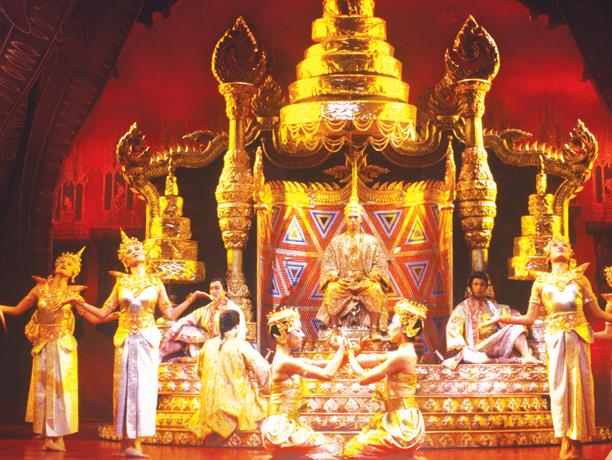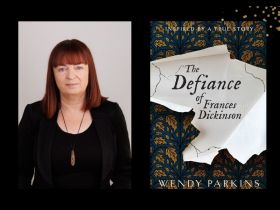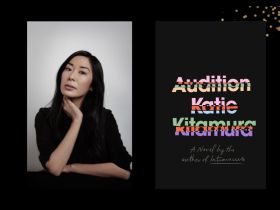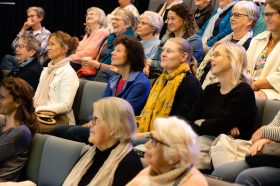Photo: Opera Australia
‘The work still presents the Thai people with a 1950s mix of exoticism and barbarism; the dialogue’s still generic Asian, can’t-pronounce-R, broken English; and the laughs come from the Thai people misunderstanding the British/American culture. Despite its intent, The King and I still has some awkward moments that feel a bit like politely listening to Grandpa tell an off joke because he doesn’t know better,’ complained Anne-Marie Peard at AussieTheatre.com.
‘You have to wonder why Opera Australia decided that The King and I was ripe for a revival. Of all Rodgers and Hammerstein’s musicals, it’s probably the one with the most obvious problems in its representation of race,’ griped Ben Neutze in The Daily Review.
Of course they are right about the politics. Viewed through a 21st century lens, a 1950s rendition of a 19th century story is filled with caricatures and assumptions, some of them cringeworthy. No question The King and I is rooted in colonial stereotypes.
But if we are going to get started down this track we have a long road ahead of us. Take Gershwin’s African-American opera Porgy and Bess. It was welcomed in the 1920s as an opportunity for black actors and a sympathetic portrayal of their stories. But by 1976 its stereotyping was derided by New York Times music critic Harold Schonberg with the comment, ‘The libretto invents a never-never land with crap-shooting, watermelon-toting black stereotypes who in moments of stress fall on their knees and start shouting spirituals.’
There is a great deal of fun to be had in reading – and in writing – the condemnations of the anachronistically self-righteous and the opportunities are endless, from the toe-tappers of the early 20th century right back to Shakespeare and Chaucer.
The Taming of the Shrew is grist to the mill for a feminist reading. Othello is studded with racial slurs and an underlying slander that the black man is more violent than the white. The Merchant of Venice is notoriously implicated in the blood libels central to European persecution of Jews.
I am as offended as anyone by group hate. Lest this article prompt anyone to question my multicultural credentials I will mention that I have worked as Executive Director of an anti-racism organisation, founded a Multifaith Leadership Program and received an award from the Islamic Council of Victoria for leading a campaign from the Jewish community in support of a Muslim group facing discrimination over a planning issue.
But when it comes to approaching the arts my attitude is governed by a salutary conversation I had with my father while I was still in primary school. Dad had given me The Thirty-Nine Steps by John Buchanan, a rollicking mystery but a novel tainted by a character who peddles unchallenged some appalling anti-Semitic claptrap. As a precocious reader and ideologically purist 10-year-old I was horrified.
I asked my father if he had realised the book contained the anti-Semitic passages when he gave it to me. He did not answer my question but asked one of his own: ‘Did you like the story?’
I did. ‘Well if you don’t read books with anti-Semitic characters you are going to miss out on a lot of good stories,’ Dad said.
That dictum has guided me through Oliver Twist, the poetry of T.S. Eliot and, with a little more difficulty, the music of Richard Wagner. It has not caused me to swallow every one of these works as great art but it has allowed me the possibility that, despite the limitations of their offensive context, they may be worthy of my serious attention.
By extension, it has also opened up for me the worlds of Huckleberry Finn and Sherlock Holmes, Gone with the Wind and Rudyard Kipling, all of which raise my hackles in racist passages. How many good stories, hours of pleasure and insights into other aspects of life would have been lost if I had maintained by childish outrage at every dated stereotype and racist slur embedded in a period piece.
It’s not just ethnic stereotyping. If one were not prepared to suspend at least some feminist sensibilities and understand work within the context and limitations of the past, one would lose Manet’s Le Déjeuner sur l’herbe, Tess of the D’Urbervilles and Rigoletto – to take examples across three art forms. All contain power imbalances that are deeply problematic to modern audiences.
Reinterpretation in modern renditions is part of the answer and one reason Shakespeare survives. Warren Mitchell’s Shylock is greater than Laurence Olivier’s because, while Olivier us gives us his inimitable delicious delivery of the language, Mitchell creates an outsider to Venetian society whose nastiness is at least understandable through his own suffering. Director Jack Gold, who cast Mitchell, doesn’t redeem the text – nothing could – but he addresses some of its problems without forcing us to expurgate an uncomfortable chapter in our cultural history.
The layering a new rendition gives a Shakespearean text is hardly possible between ‘I Whistle a Happy Tune’ and ‘Shall We Dance?’. But British director Christopher Renshaw has done his best in this production of The King and I to inject a new authenticity into the work through touches like the Thai monks who sit quietly on the edge of the stage and through direction that brings out the revolutionary aspects of the story. Those concerned with the ethnic stereotyping seem to have missed that the story is equally a triumph for cross-cultural communication and for women who stand up to despotic men.
But what The King and I needs most is what the curmudgeons have failed to deliver: the willing suspension of anachronistic audience sensibilities. Suspension of disbelief is at the heart of so much art appreciation. We don’t sit in a musical complaining that Anna would hardly have burst into song on the docks or that the King couldn’t possibly be dancing like that after a two-minute lesson. In the same way, we need to do our part as audiences to understand the lens with which we are required to approach a work.
Otherwise we will miss out on a lot of good stories.





